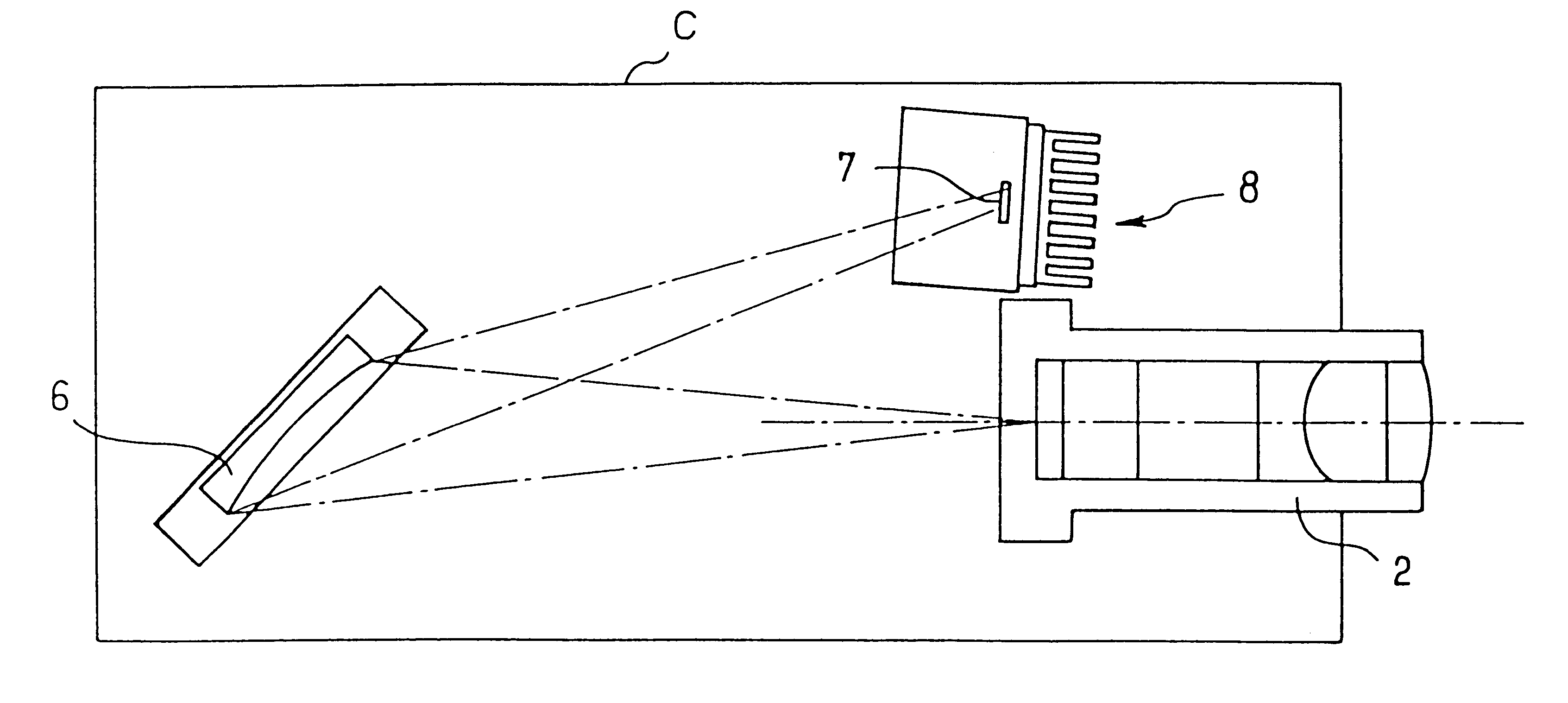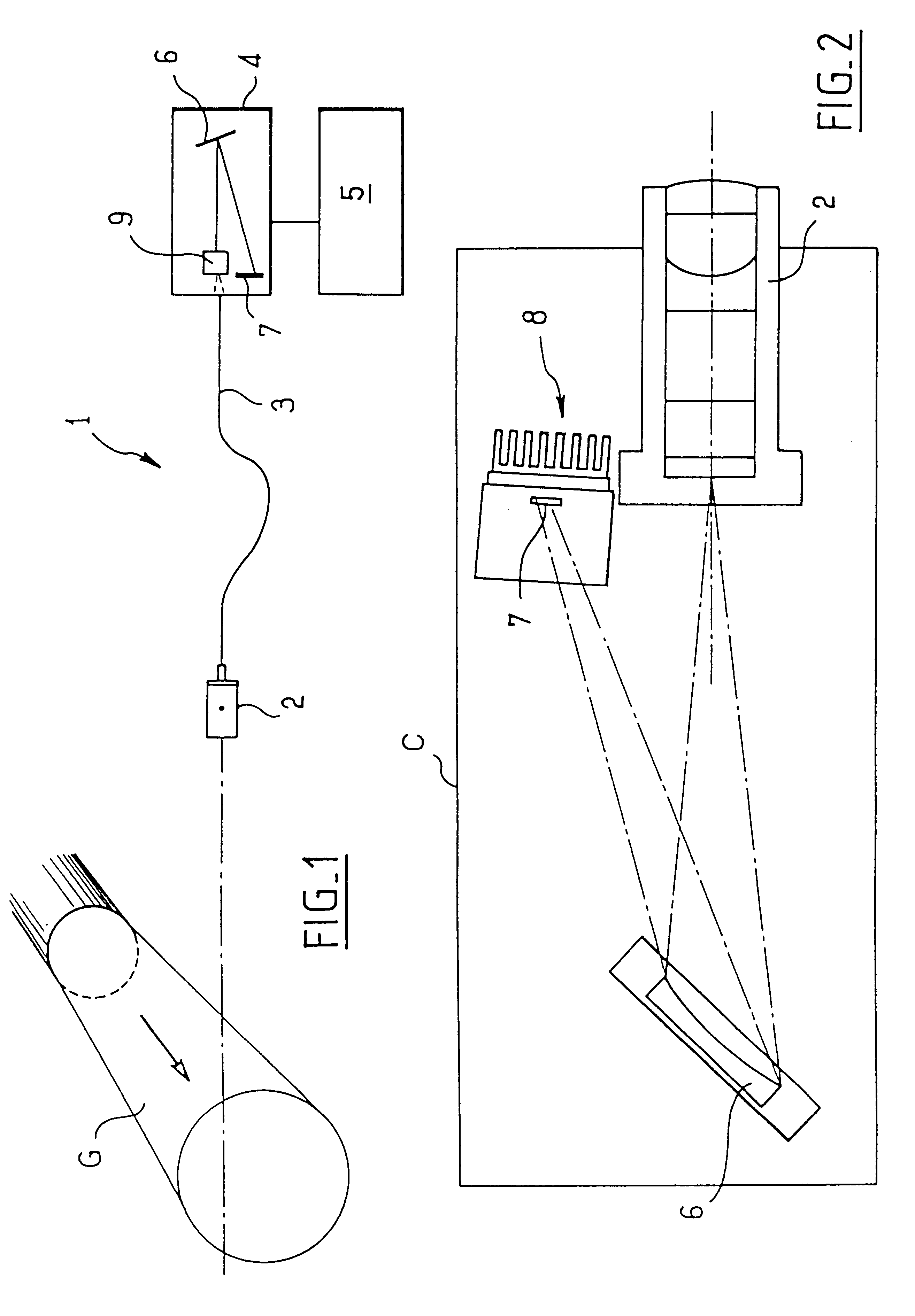Sensor for measuring temperature and/or concentration
a technology of temperature and concentration, applied in the direction of thermometers, instruments, material thermal analysis, etc., can solve the problems of not being able to measure directly and reliably, unable to envisage the use of spectrometers conventionally found on the market, and limited flame li
- Summary
- Abstract
- Description
- Claims
- Application Information
AI Technical Summary
Benefits of technology
Problems solved by technology
Method used
Image
Examples
Embodiment Construction
FIG. 1 shows the principle on which a sensor 1 constituting a possible embodiment of the invention performs a measurement.
In this example, the sensor 1 is constituted by an optical head 2 which picks up the infrared information emitted by hot gases G circulating in a stream, an infrared optical fiber 3 for conveying the optical signal from the optical head 2, means 4 constituting a static spectrometer tuned to the temperature radiation of a molecular species present in the hot gases, and a processor 5 for performing calculations.
The optical head 2 is aimed at the zone in which the hot gases emit infrared radiation under the effect of temperature. In general this is a rotation-vibration band characteristic of the gas molecule whose temperature is to be measured. Most such bands lie in a wavelength range extending from the visible to 10 micrometers (.mu.m).
The optical head 2 can be constituted by telescope type means, thereby enabling a spectral response to be obtained independently o...
PUM
| Property | Measurement | Unit |
|---|---|---|
| emissivity | aaaaa | aaaaa |
| pressures | aaaaa | aaaaa |
| temperatures | aaaaa | aaaaa |
Abstract
Description
Claims
Application Information
 Login to View More
Login to View More - R&D
- Intellectual Property
- Life Sciences
- Materials
- Tech Scout
- Unparalleled Data Quality
- Higher Quality Content
- 60% Fewer Hallucinations
Browse by: Latest US Patents, China's latest patents, Technical Efficacy Thesaurus, Application Domain, Technology Topic, Popular Technical Reports.
© 2025 PatSnap. All rights reserved.Legal|Privacy policy|Modern Slavery Act Transparency Statement|Sitemap|About US| Contact US: help@patsnap.com



